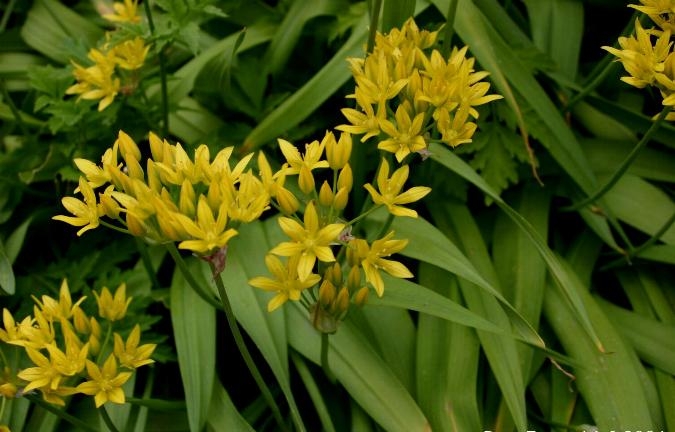Golden Garlic
(Allium moly)
Golden Garlic (Allium moly)
/
/

Sten Porse
CC BY-SA 3.0








































Estimated Native Range
Summary
Golden Garlic is valued for its vibrant yellow blooms and ease of maintenance, making it a popular choice for rock gardens, borders, and as a ground cover. It is also used in culinary applications, though it is not as commonly consumed as other Allium species. This plant thrives in full sun to part shade and prefers well-drained soils, though it can tolerate a range of soil conditions. It is drought-tolerant once established, making it suitable for xeriscaping. Allium moly can be propagated by seed or division of clumps in the fall. While generally pest-free, it can be susceptible to onion fly and thrips. It is not known to be invasive and does not have aggressive roots, making it a safe choice for most gardens.CC BY-SA 4.0
Plant Description
- Plant Type: Bulb
- Height: 0.8-1.5 feet
- Width: 0.5-0.8 feet
- Growth Rate: Rapid
- Flower Color: Yellow
- Flowering Season: Spring, Summer
- Leaf Retention: Deciduous
Growth Requirements
- Sun: Full Sun, Part Shade
- Water: Medium
- Drainage: Fast, Medium
Common Uses
Bee Garden, Bird Garden, Border Plant, Butterfly Garden, Deer Resistant, Drought Tolerant, Edible*Disclaimer: Easyscape's listed plant edibility is for informational use. Always verify the safety and proper identification of any plant before consumption., Fragrant, Groundcover, Hummingbird Garden, Low Maintenance, Rabbit Resistant, Rock Garden, Salt Tolerant, Showy Flowers, Street Planting
Natural Habitat
Native to the rocky, dry slopes and scrublands of southwestern Europe, particularly the Pyrenees and areas of Spain
Other Names
Common Names: Lily Leek, Yellow Garlic, Yellow Onion, Moly, Goldlauch, Gold-Lauch, Ail Doré, Guldlök
Scientific Names: , Allium moly, Cepa moly, Kalabotis moly, Molyza moly, Molyza moly publ, Nectaroscordum moly,
GBIF Accepted Name: Allium moly L.